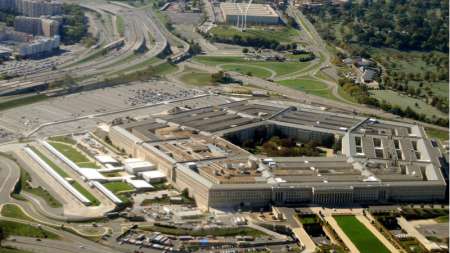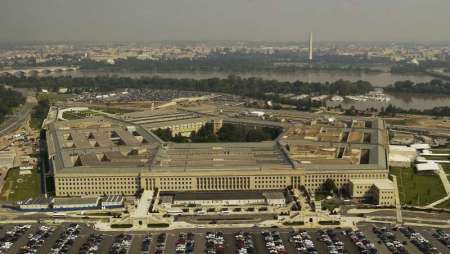By Michael Zurat, Senior Solutions Architect, GDIT 5G, Artificial Intelligence and Edge Computing have been areas of focus in the IT space for some time. What’s been given less attention, until recently, is how these three powerful technologies interact with one another and how, as one example, 5G is precisely what enables AI capabilities at the […]
By Ken Walker, President & Chief Executive Officer, Owl Cyber Defense Government agencies are under siege from ransomware and incredibly sophisticated cybersecurity threats, such as the 2020 SolarWinds supply chain attack. To help fight back, lawmakers are introducing steps to broaden defenses through non-traditional approaches. The Supply Chain Security Training Act (SCSTA) bill, recently passed […]
By: Raghu Nandakumara, Senior Director, Head of Industry Solutions, Illumio From the Colonial Pipeline breach to the JBS ransomware attack, the past year has shown us that cyberattacks on U.S. critical infrastructure are more relentless, sophisticated, and impactful than ever before – and all too often threaten the economic stability and wellbeing of U.S. citizens. […]
By: Kyle Dimitt, Principal Engineer, Compliance Research at LogRhythm Supply chain attacks have been on the rise across the globe, as we saw with targeted attacks against SolarWinds and Kaseya. The spike has created a large risk in the Federal government since industry supply chains don’t necessarily have to adhere to a set level of […]
By Scott Ormiston, Federal Solutions Architect, Synack Within a single week in late March, the Biden administration both reissued the call for American companies to shore up their cybersecurity efforts in the wake of the Russia-Ukraine war, and requested nearly $11 billion in cybersecurity funding from Congress for the Federal government and its agencies for […]
Intelligence analysts are drowning in data amid ever-increasing numbers of communication channels, devices, and open-source intelligence. Intelligence professionals often apply an adaptation of the Pareto Principle (aka the 80/20 rule) to the challenges created by all this data. Analysts anecdotally spend 80 percent of their time looking for data and information, leaving only 20 percent […]
The use of AI and analytics are crucial for government agencies, who are among the largest owners of data. The benefits of AI are often discussed – operational efficiencies, intelligent automation possibilities and the ability to gain deeper insights from massive amounts of data. With the intense interest and proliferation of AI, governance of machine […]
From pandemic relief bills to the cybersecurity executive order and the bipartisan infrastructure bill, Federal agencies have a wealth of mandates and opportunities to create new programs. While each of these executive and legislative actions feature varying priorities, funding methods, and delivery objectives, in a larger sense they are unified by requiring Federal agencies to […]
The Department of Defense (DoD) last month released its Software Modernization Strategy, an important step to unifying existing technology and directing a more joint approach to systems of the future. It notes that our competitive posture is “reliant on strategic insight, proactive innovation, and effective technology integration enabled through software capabilities.” Further, it asks DoD entities that are driving software development to address management and governance of the 29 software factories spread across the services. […]
If and when the COVID pandemic fades into history, the shift toward remote and hybrid work is poised to persist. In an April 2021 Forrester Consulting survey of more than 1,300 security leaders, business executives, and remote workers, 70 percent said their organizations will have employees working from home one or more days a week during the next 12 to 24 months. […]
In today’s digital age, it’s clear that artificial intelligence (AI) and machine learning (ML) will be a part of all digital transformation journeys – including those of government. […]
The Federal government has recently taken new steps towards creating a zero trust security environment, building on last May’s Executive Order on Improving the Nation’s Cybersecurity (EO) aimed at advancing the standards by which we protect our federal information system. […]
Congressional and White House mandates have put digital transformation at the top of to-do lists across the Federal government for many years now – from Cloud Smart strategies to the recent Executive Order on Improving the Nation’s Cybersecurity. These mandates, as well as agency-driven modernization, articulate critical goals such as improving cybersecurity and creating more efficiency. […]
Equitable service delivery is at the center of today’s government mission, with executive orders spurring a holistic evaluation of agency practices, programs, and policies. Leaders across Federal agencies are committed to providing value to all people when they need it most, but they also recognize that the journey requires new approaches and mechanisms to make a sustained difference. […]
The Biden administration is determined to improve trust in government, and as part of that goal has made equity a top priority. Agencies are at work responding to recent mandates with assessments about their programs and policies to uncover barriers to serving all demographics and communities. […]
President Biden’s executive order (EO) on improving the nation’s cybersecurity was a call to action to prioritize cyber safeguards in both the public and private sectors. […]
Almost two years ago, life fundamentally changed overnight. People of all backgrounds and communities found themselves needing government services to make it through challenging times, and the Federal government responded by authorizing initiatives like the Paycheck Protection Program (PPP) and economic impact payments. […]
By now, Federal IT decision-makers are very familiar with machine learning (ML) and artificial intelligence (AI). […]
Federal agencies continue to confront the challenge of enabling and expanding telework as the need to protect against the spread of COVID-19 affects employees in a variety of roles nationwide. Last year, through technology and ingenuity, agencies rose to the challenge, deploying telework for many functions that previously did not seem suited to it. 2020 created a laboratory for experimenting with technical solutions, personnel management techniques, and security practices—and 2021 is pushing those same limits. […]
Across the U.S. government, Federal CISOs and CIOs are working to address potential vulnerabilities on the new “front lines” of defense: cybersecurity and the software supply chain. The SolarWinds and Colonial Pipeline cyberattacks raised more widespread visibility and understanding of the impact of these threats, and in the months that have followed, a cadre of new mandates, draft legislation, and operational directives are taking aim at solving existing vulnerabilities and preventing new ones. […]
The recent Binding Operational Directive issued through the Cybersecurity and Infrastructure Security Agency (CISA) requiring Federal agencies to immediately patch hundreds of cybersecurity vulnerabilities affirms the Biden administration’s prioritization on securing Federal government networks and reinforces that improved cyber hygiene is critical to protect against malicious adversaries seeking to infiltrate government systems and compromise data. […]
Top cybersecurity officials from the Defense Department (DoD), Federal civilian agencies, and the private sector laid out their developing strategies for zero trust security migration, cloud adoption, and meeting requirements of the Biden administration’s Cybersecurity Executive Order at an October meeting of the Foundation for American Science and Technology (FAST). […]
We’re experiencing an evolution towards a cloud-native government, where capabilities are viewed as modular and shared like a commodity. To meet mission requirements into the future, this evolution will allow agencies to continuously adapt – flexing these modular, shared cloud-based capabilities to their changing needs. […]
When it comes to the financial impact of data breaches, the healthcare sector consistently tops the list of industries. Dollars and cents, however, represent only a fraction of the damage, especially when it comes to military healthcare networks and programs, which have an immediate and direct impact on national security. […]
With this year’s release of a major strategy policy on cybersecurity, the White House is sending a clear message to agencies: We must move toward the implementation of a zero trust architecture (ZTA) government-wide – and swiftly. […]
The past decade has seen significant data generation around the globe. Market research firm International Data Corporation (IDC) has predicted that the amount of data generated globally will grow from 33 zettabytes today to 175 zettabytes by 2025, for a compound annual growth rate of 61 percent. […]
Amid a rising tide of ransomware attacks against governments and schools nationwide accelerated by the COVID-19 pandemic, tech pros are prioritizing investments in core technologies to manage risk, including security and compliance, network infrastructure, and cloud computing. […]
Ransomware attacks are filling headlines. Now reaching unprecedented levels, the ransomware crescendo is part of the surge in cyber-attacks that became a side effect of the COVID-19 pandemic. […]
The Accenture Federal Technology Vision addresses the five technology trends poised to have the greatest impact on how government operates over the next three years. Today, we look at Trend 5: From Me to We, which promises to place the ecosystem at the core of government operations. […]
The Accenture Federal Technology Vision looks at five technology trends likely to have the most significant impact on how government operates over the next three years. Today, we look at Trend 4: Anywhere, Everywhere, considering the implications of virtual work patterns across the Federal space. […]
Archives
- December 2025 (2)
- November 2025 (1)
- October 2025 (1)
- August 2025 (1)
- July 2025 (1)
- June 2025 (3)
- May 2025 (2)
- April 2025 (3)
- March 2025 (2)
- December 2024 (1)
- August 2024 (3)
- July 2024 (1)
- June 2024 (5)
- May 2024 (1)
- March 2024 (1)
- December 2023 (2)
- September 2023 (2)
- August 2023 (2)
- June 2023 (2)
- May 2023 (2)
- April 2023 (1)
- March 2023 (2)
- February 2023 (2)
- January 2023 (1)
- December 2022 (2)
- November 2022 (2)
- October 2022 (6)
- September 2022 (7)
- August 2022 (1)
- June 2022 (3)
- April 2022 (2)
- March 2022 (6)
- February 2022 (3)
- January 2022 (1)
- December 2021 (3)
- November 2021 (5)
- October 2021 (2)
- September 2021 (2)
- August 2021 (7)
- July 2021 (2)
- June 2021 (3)
- May 2021 (3)
- April 2021 (4)
- March 2021 (1)
- February 2021 (1)
- December 2020 (1)
- November 2020 (1)
- October 2020 (5)
- September 2020 (1)
- July 2020 (3)
- June 2020 (3)
- May 2020 (2)
- April 2020 (1)
- March 2020 (1)
- February 2020 (2)
- January 2020 (3)
- November 2019 (1)
- October 2019 (1)
- July 2019 (2)
- April 2019 (1)
- February 2018 (1)
- December 2017 (1)
- November 2017 (2)
- October 2017 (1)
- September 2017 (5)
- July 2017 (1)
- June 2017 (2)
- March 2017 (2)
- November 2016 (1)
- October 2016 (5)
- September 2016 (3)
- August 2016 (1)
- July 2016 (2)
- June 2016 (1)
- May 2016 (1)
- April 2016 (2)
- March 2016 (3)
- January 2016 (1)
- December 2015 (1)
- November 2015 (1)
- September 2015 (2)
- August 2015 (2)
- July 2015 (3)
- May 2014 (1)
- November 2013 (1)
- August 2013 (1)


























